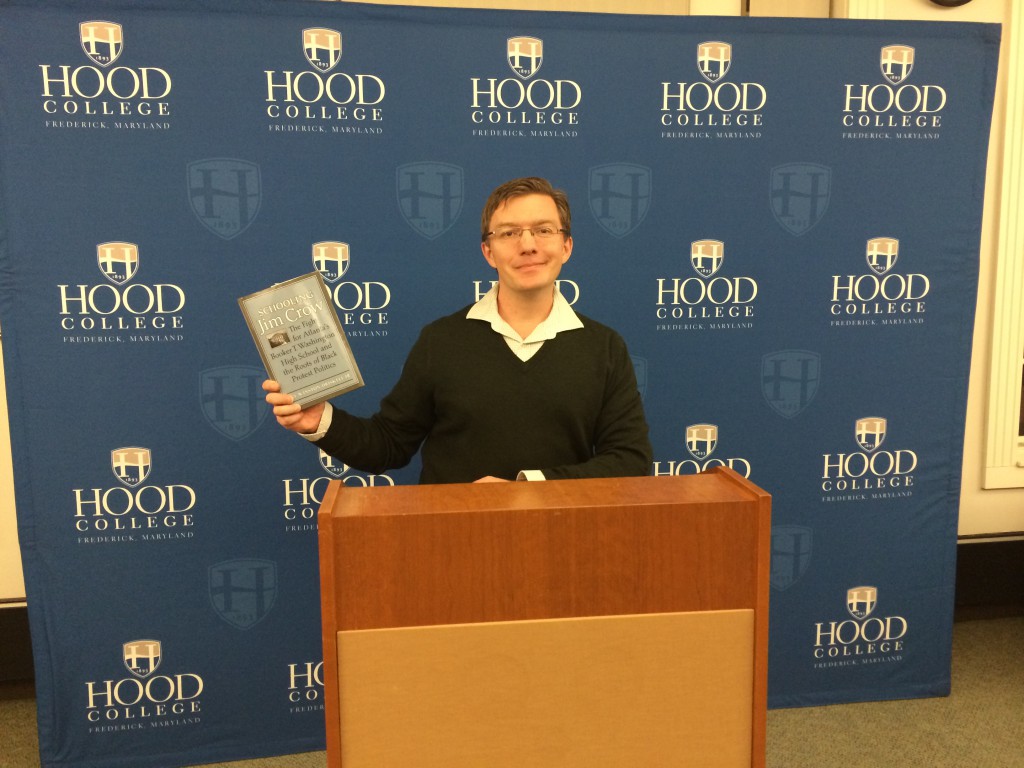
By Cameron Rogers

Hood’s library hosted a reception for the release of a book by one of its professors Tuesday night.
The book, entitled Schooling Jim Crow: The Fight for Atlanta’s Booker T. Washington High School and the Roots of Black Protest Politics, covers the struggles that the black community in Atlanta, Ga. encountered in the early 20th century. The reception for its release was held on the Library’s second floor, starting at 6 p.m.
Dr. Jay Driskell, the book’s author and a history professor at Hood, established the time period of his book by describing the discrimination and violence faced by blacks in the Jim Crow era.
Between the late 19th century and the mid-20th century, over 4700 blacks were lynched. The fear of violence from white mobs hung over black communities across America.
“In the face of this overwhelming violence,” Dr. Driskell said, “black elites tried to change the subject.”
He said that black politicians and wealthier black elites, such as Booker T. Washington, tried what he described as a “bridge discourse,” where black and white elites agreed to keep whites safe from the black working class in exchange for personal advancement and improved conditions for the working class.
However, as Dr. Driskell noted, these discourses often favored whites more than blacks, leaving black schools underfunded and lacking sections such as the 8th grade. With the arrival of the NAACP in Atlanta in 1916, the black communities in the city attempted to reverse this trend by registering people to vote.
“They turned away from the language and politics of respectability,” he said about their new strategy.
Overcoming obstacles like poll taxes and other rules designed to keep blacks from voting, over 3000 blacks were registered to vote. With this much influence, the NAACP was able to tip the scales in their favor during voting season, blocking bonds in Atlanta that plunged the city into an economic crisis.
Dr. Driskell concluded by stating that it was only until the city government agreed to fund black schools and improve black neighborhoods in 1921 that the bonds were voted in.
A Q&A session was held between 6:35 and 7 p.m., during which he answered questions regarding the religious communities’ roles in the voting registration, and his opinions on the issues that the black community faces today.




Be the first to comment